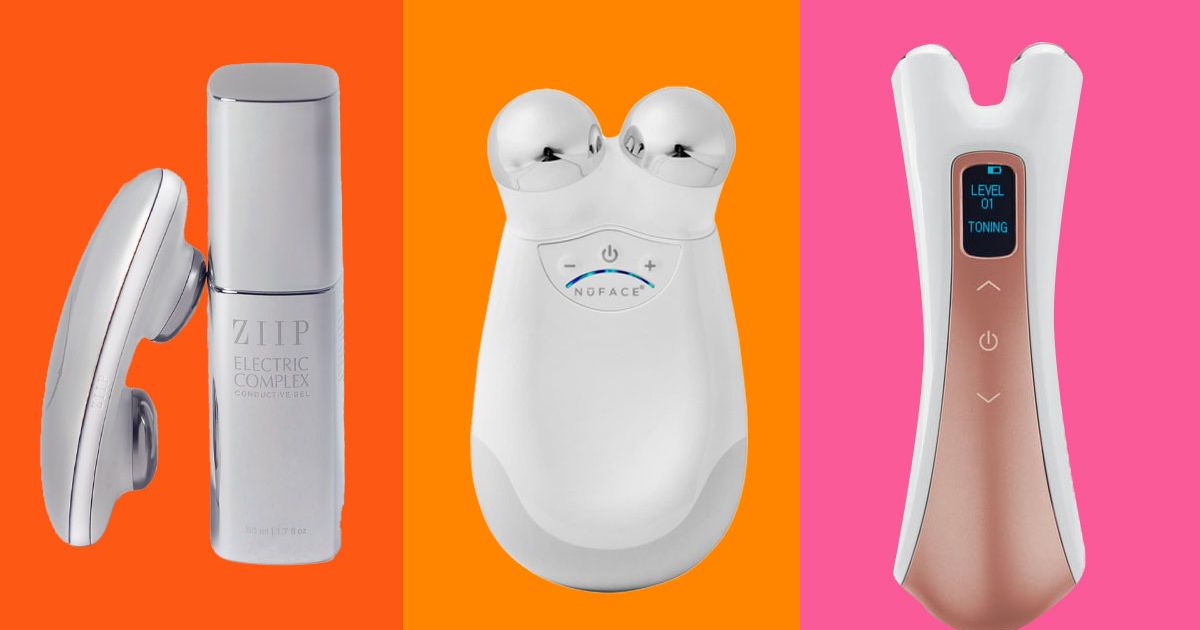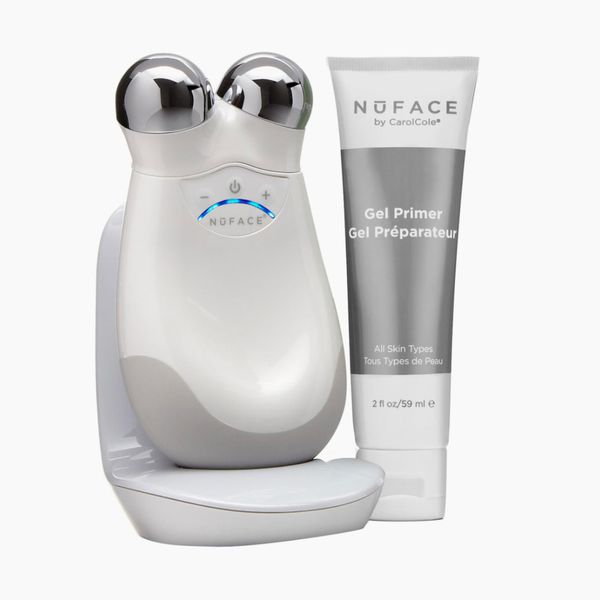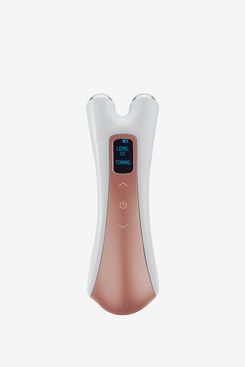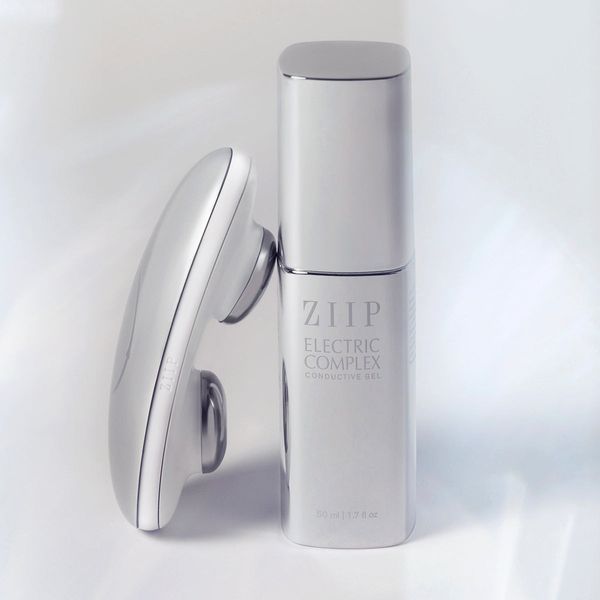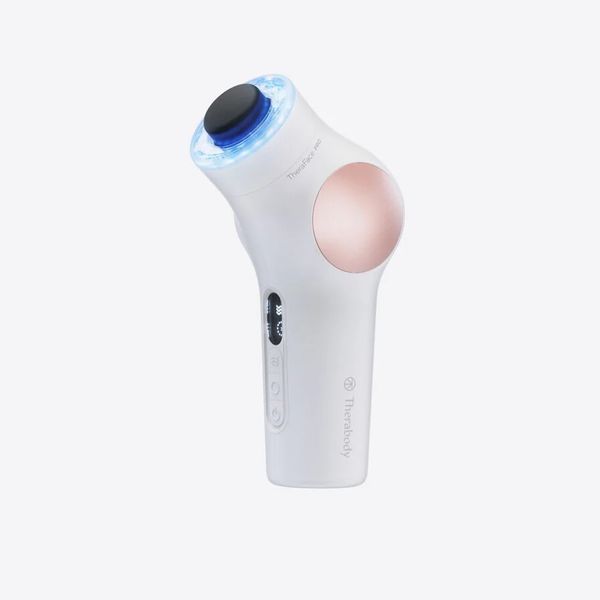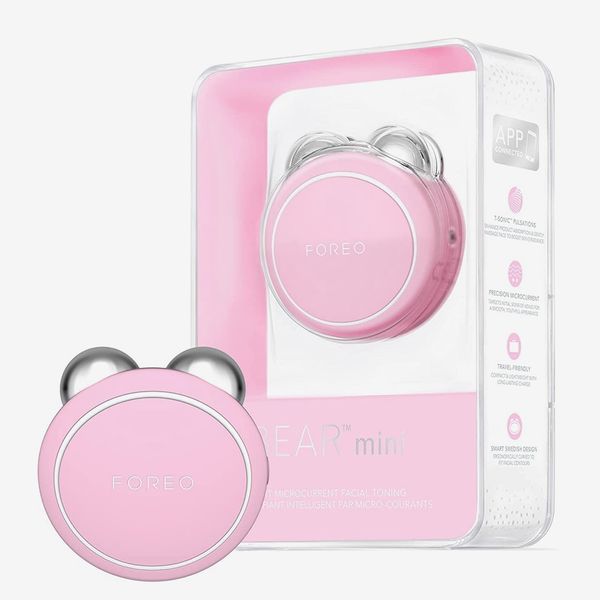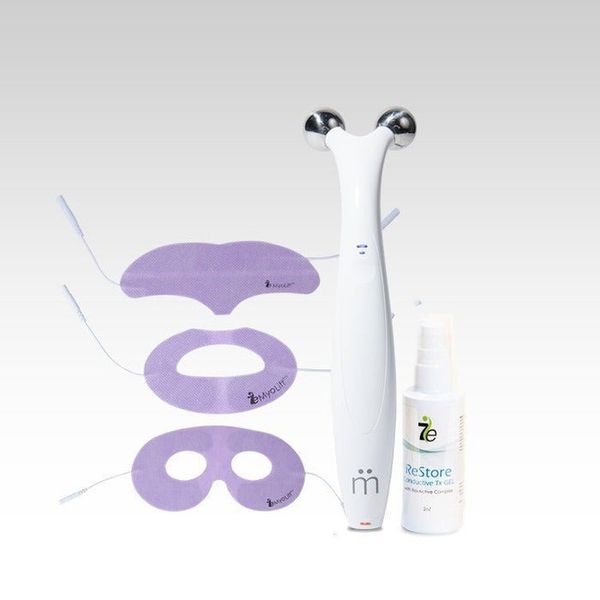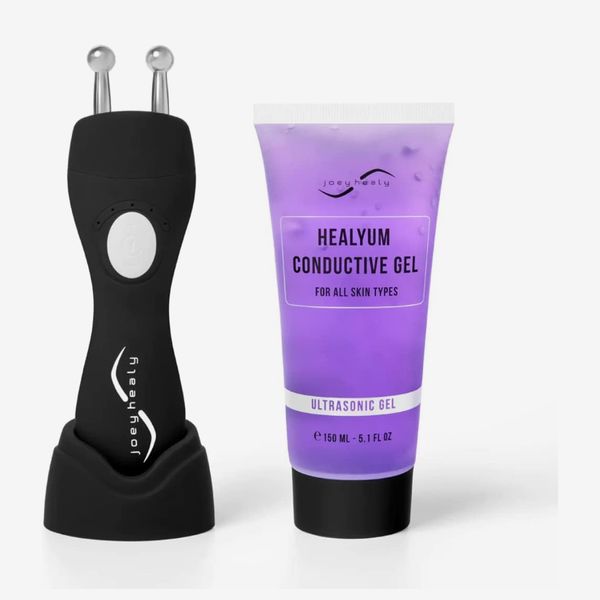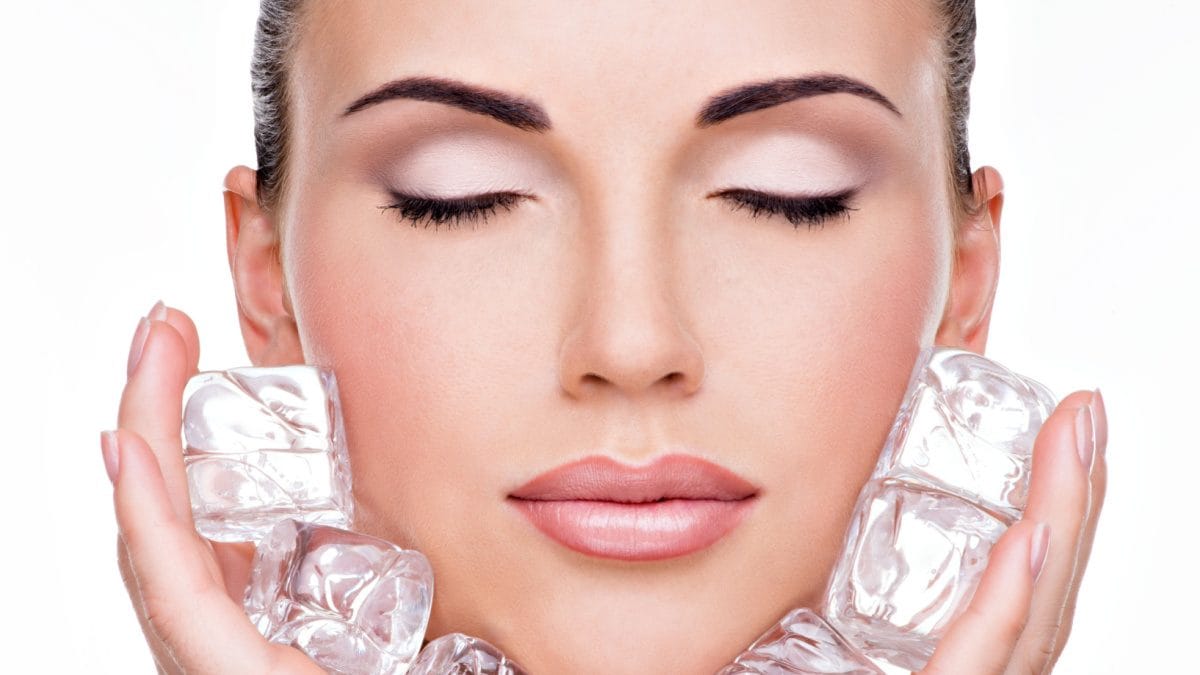Views: 0
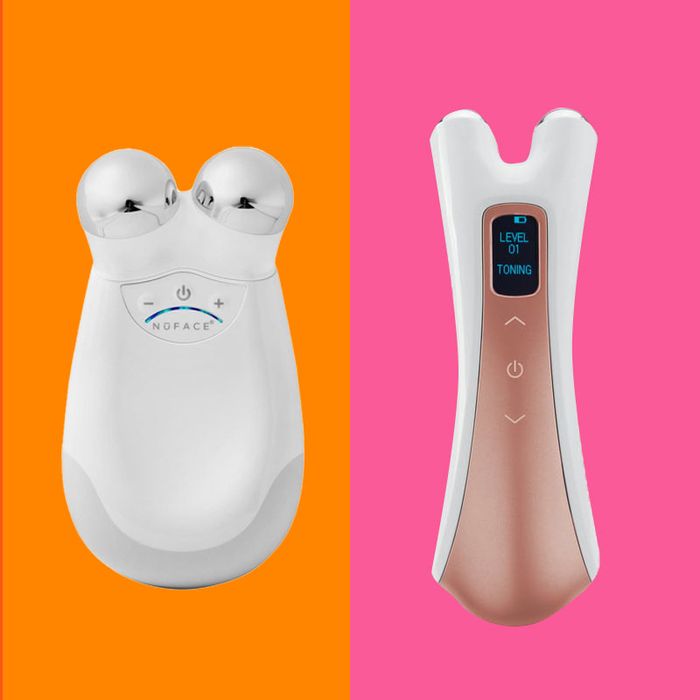
Photo-Illustration: The Strategist; Photos: Retailers
As a beauty editor in her 40s who’s not exploring needles (no neurotoxins and fillers — for now), I’m into devices that upgrade at-home skin-care routines. So I’ve used microcurrent devices for years. And when I do, my face really does look better: not as puffy. Defined cheekbones. Lifted and refreshed. Microcurrent gives you that just-walked-out-of-a-facial look, all while being easier to use than a gua sha. “Microcurrent devices stimulate and produce gentle contractions in the muscles of the face using low-voltage electrical current. This can temporarily increase those muscles’ resting tone,” says board-certified dermatologist Dr. Daniel Belkin of New York Dermatology Group. It’s like going to the gym and doing a bunch of curls. Immediately after your workout, the biceps are defined, says dermatologist Mona Gohara, MD, associate clinical professor of dermatology at the Yale School of Medicine.
As with any workout program, you need to commit — typically at least five times a week — to see cumulative benefits from microcurrent. The idea is that over time you are firming muscles. “The energy runs through the muscle to strengthen it, and the stronger muscle then lifts the skin due to the increased size of the muscle. This is all very microscopic, so you won’t build bulky muscles in your face,” says Joie Tavernise, an NYC-based esthetician. “You can expect the skin to look smoother and firmer from microcurrent devices. However, to maintain the results, the treatment needs to be performed frequently,” says Marina Peredo, a board-certified dermatologist and associate clinical professor at the Department of Dermatology at Mount Sinai School of Medicine. In other words, microcurrent devices tend to work best for someone with an established skin-care routine who’ll stick with it and is looking for an extra boost — not a miracle.
Here, find the best microcurrent devices for all types of users. I’ve tested out a few myself, and every one of them is recommended by a group of several experienced skin-care experts — doctors and estheticians — whom I trust.
This is the gold standard OG of microcurrent devices. The NuFace has been around since 2005, and every doctor I spoke to recommended it. I’ve used it over the years and found the probe sizing is good for almost all areas of your face. (It has other attachments available for purchase for smaller areas, such as the lips). It also depuffs the eyes, which Shamara Bondaroff, a New York– and Miami-based facialist, says is the result of microcurrent increasing circulation and lymphatic drainage. “It leaves you looking well rested even if you’re not,” she says. I’ve found the cheekbone-lifting effect to be immediate, and, making it particularly impressive, it lasts for about two days.
The RejuvatoneMD is larger and more substantial than similarly priced compact microcurrent devices. And its medium-size probes are the right size for most of the face. The body of the device is larger than average, which gives the user more leverage, allows for a better grip, and makes maneuvering it around the face more controlled. It delivers similar results and ease of use as the NuFace at a much lower price point. One potential drawback is that it doesn’t have lots of attachments to vary the types of treatment. But Gohara sees that simplicity as a good thing: “I like that it is very not difficult to use, with one button for on and off, an intuitive touch pad to adjust the vibration.”
andThe newest version of ZIIP is more compact (and affordable) than the beloved original. It’s also more user-friendly, with a new preprogrammed four-minute facial and the option to sync to an app for a library of easy-to-follow facial tutorials. There are videos for full facials that range from four to ten minutes, along with shorter videos that help you target specific area and achieve specific goals such as a lifted brow or tighter jawline. I felt more comfortable using the ZIIP after watching them. Edyta Jarosz, master aesthetician at Shafer Clinic Fifth Avenue in New York, likes this device for its combination of microcurrent and nanocurrent. “Unlike traditional microcurrent technology that mainly lifts, sculpts, and tightens, the ZIIP can address hyperpigmentation, acne, and puffiness, and it can be used on delicate areas (under eyes) without extra attachments,” she says.
At-home devices produce much weaker currents than professional models, but this one has so much versatility in treatments you might see it used in the office too. “I find myself using it on my clients,” says Natalie Aguilar, an aesthetician based in Beverly Hills. “Because it offers so many different therapies, such as LED light, hot and cold rings, various face massagers, and of course, a microcurrent attachment, I constantly use it. It is very easy to use, it’s cord free, and it leaves instant results. It really depuffs and tones. It’s also timed, so I know a full treatment has been achieved.”
If you get regular facials, estheticians often recommend microcurrent to patients and clients as at-home maintenance to supplement what they do at the spa. “It’s a great way to not only keep up with your facial results at home but also enhance those results even further,” says Savannah Frommel, an esthetician at the Spa at Selenite in Charlotte, North Carolina. Her favorite home device is the Foreo Bear Mini Microcurrent device. She describes it as compact enough to take along while traveling but still powerful. It’s the smallest of all the devices here and simple to use.
In addition to a two-pronged handheld device, Myolift QT Plus comes with hands-free conductive mask attachments for the eyes, lips, and forehead. “Our favorite part of the QT is its accessories,” says Christina Uzzardi, esthetician and founder of Cheeks + Co, who points out that compliance is a big part of the equation so the easier, the better. Start with a light layer of conductive gel (Uzzardi prefers aloe and a touch of glycerin), then select a program and apply the attachments. “Watch your favorite show and let the device do its magic,” she says.
When shopping for a device, consider the area where you are most likely to use it. “If your handheld device is too big, or recommended treatment times are too lengthy, using your microcurrent tool becomes unrealistic,” Aguilar points out. The advantage of this narrow device and smaller prongs is that it can easily target brows and jawline. When I tested the Joey Healy, I realized the smaller probes make it ideal for the eye and brow area (its creator is a brow expert, after all). New York dermatologist Gary Goldenberg likes that this tool has the option of five different strength settings. “Some areas of the skin are more delicate, like the areas on the eyes or on the mouth where you don’t necessarily want to have the same strength as you would on the forehead or their cheeks or a neck,” he says. I did feel the difference among the settings, and I found the lower settings were much more tolerable around the eye and brow area. It’s worth noting that microcurrent shouldn’t hurt, but you can expect some sensation or tingling — and even twitching — around the eyes as the muscles contract. “If you’re using conductive gel correctly, the sensation should be minimal,” Bondaroff adds.
The Strategist is designed to surface the most useful, expert recommendations for things to buy across the vast e-commerce landscape. Some of our latest conquests include the best acne treatments, rolling luggage, pillows for side sleepers, natural anxiety remedies, and bath towels. We update links when possible, but note that deals can expire and all prices are subject to change.
The Best Microcurrent Devices, According to Experts


